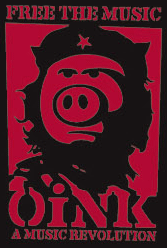
By now everybody has heard of music piracy, a trend that has quickly spread across the world as vast networks of users connect to swap their favorite tracks in the form of digital files. Many attempts have been made to curtail this sensation, from cumbersome “Digital Rights Management” or DRM on purchased content to subscription-based services that offer limited but less restricted access. Unfortunately, many of these schemes have been successful neither at securing widespread market penetration nor at decreasing music piracy. However, what if instead of trying to fight them, the successful model of the music downloading community could be adopted and legitimized? Using technology known as BitTorrent, a service can be provided to music enthusiasts that is able to meet their content needs while moving them from the fringes into the realm of consumers.
BitTorrent is at its core a community-based system. Rather than downloading whole files from a single source, users download small pieces of the file from multiple other users. Downloaders are able to simultaneously receive pieces from their fellow users while uploading pieces they already have to other peers in a cooperative system that is able to dramatically increase download speeds and allows multiple or large files to be received relatively quickly. Websites known as “trackers” compile information relating where the various pieces of a file can be found that users are able to access by downloading small files known as “torrents”. Those interested in more detailed information on exactly how the BitTorrent protocol works can find it here.
One of the immediate problems visible with such a community-based system is the type of user active torrenters term a “leecher”: a user who arrives only to download files and spends as little time as possible uploading what they have received. Exclusive communities known as “private trackers” have arisen as a way of both encouraging users to give back to the community and ensuring that the content provided is of desirable quality.
Potential downloaders are discouraged from leeching via a simple ratio-based system. The tracker monitors the amount of data a user has downloaded and compares it to how much the user has uploaded. Because the download total comprises the denominator of the fraction, a user who seldom uploads will very quickly incur a small decimal ratio. Members of the community are required to maintain a certain minimum ratio, effectively ensuring that members will continue to seed files after they have finished downloading them and guaranteeing that subsequent downloaders will continue to enjoy the same fast speeds the presence of multiple seeders provides.
Additionally, the strict quality requirements of a private tracker provide one of its major draws to users, as they are assured that the content they download will both sound excellent and be usable. Indeed, the most elite of private trackers provide audio files in lossless file formats that can then be converted into popular compressed formats such as .mp3 that can be transferred to portable devices.
Rather than fighting the booming BitTorrent community, the music industry need only create and support the most popular elite private tracker on the internet, accessible to users for a small subscription fee.
What does this background information mean to the music industry? Simply that a radical and powerful business model exists that if implemented properly, has the potential to reach a market that has been eluding the music industry for years. Rather than fighting the booming BitTorrent community, the music industry need only create and support the most popular elite private tracker on the internet, accessible to users for a small subscription fee.
Currently the music industry has access to music files of a quality unparalleled on today’s BitTorrent networks: a massive library of original master recordings. By making these available via a private BitTorrent tracker in a lossless format like FLAC, they will immediately be providing a product that is superior to what is available elsewhere. These tracks would be free of the cumbersome DRM that has plagued many other digital downloads to date. Providing a complete music catalog to users in an unrestricted, lossless digital format gives the music industry a product that is currently unparalleled in the downloading community.
Users would be able to download these files via a private BitTorrent tracker community that operated on a subscription basis. With a reasonable price point such as $15/month, a number that has shown considerable success in the online gaming community, even college students would be able to join. Each file would be guaranteed a minimum of one seeder provided by the tracker operators. Of course, more popular files would quickly gain more seeders, helping to make downloads of those files even faster. The ratio tracking systems employed by other private trackers would go to work in this model as well, the limitations preventing users from simply paying for one month of service and downloading the entire collection. Users would need to manage their downloading to ensure that their ratio remained acceptable. Finally, new releases would be immediately available via this service, releasing simultaneously via the tracker and retail outlets.
Providing a complete music catalog to users in an unrestricted, lossless digital format gives the music industry a product that is currently unparalleled in the downloading community.
Will some of these tracks find their way onto other trackers and peer-to-peer (P2P) networks? Absolutely. However, these releases would be mixed in with other, substandard offerings. While it would be possible to scour the internet for leaks of content from this service, as is possible to do with current offerings on private trackers, the majority of users have shown that they would rather get the content directly from the source. Experience has shown that private trackers are never hurting for membership and often must enforce a maximum user limit, only allowing new people to join when old accounts have gone inactive and been deleted.
While there may yet be some issues that need addressing, this model has shown strong adoption among the downloading community. Users have demonstrated that they are more than willing to pay for a service that offers them content in the form they desire. Rather than trying to stop this distribution method, the solution is to capitalize on it and become the strongest community on the web, legitimizing people who before would have gone elsewhere.
